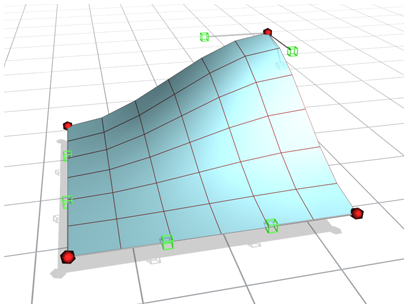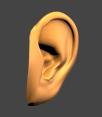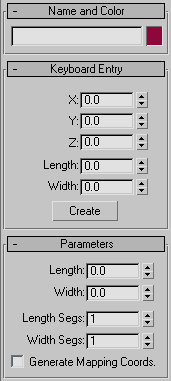Quad Patch creates a flat grid with a default of 36 visible rectangular facets. A hidden line divides each facet into two triangular faces for a total of 72 faces.

Procedures
To create a quad patch:
- On the Create panel, activate Geometry. Choose Patch Grids from the drop-downlist, then on the Object Type rollout, click Quad Patch.
- Drag in any viewport to define the length and width of the patch.
To edit a Quad Patch:
- Select a Quad Patch.
- On the Modify panel, right-click Quad Patch in stack view and choose Editable Patch.
The Quad Patch collapses to an Editable Patch.
- On the Editable Patch Selection rollout, click Vertex.
- In any viewport, select a vertex on the patch object, and move the vertex to change the surface topology.
Vertices and vectors can be animated with an Editable Patch modifier.
At the Edge sub-object level, you can add patches along any edge. You can create complex patch models beginning from a single patch.

An ear is created by adding patches and editing patch vertices
Interface

Name and Color rollout
The Name and Color rollout lets you rename objects and change their wireframe color.
Keyboard Entry rollout
- X/Y/Z
-
Sets the patch center.
- Length
-
Sets the patch length.
- Width
-
Sets the patch width.
- Create
-
Creates a patch based on the XYZ, Length, and Width values.
Parameters rollout
- Length, Width
-
Sets the grid dimensions in current units.
- Length, Width Segments
-
Determines the number of facets along the length and width of the grid. Default=1.
The density of a Quad Patch rises sharply as you increase the segments. A Quad Patch of two segments on a side contains 288 faces. The maximum is 100 segments. High segment values can slow performance.
- Generate Mapping Coordinates
-
Creates map coordinates for applying mapped materials. Default=off.